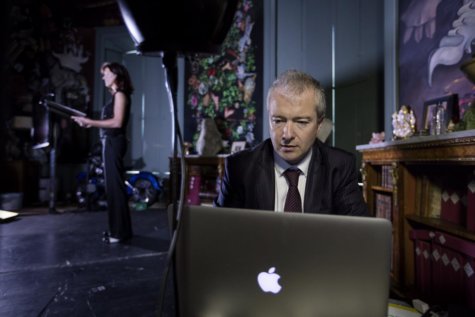PLYMOUTH, England — Have we finally reached that seemingly far off “future” described in countless works of science fiction? While flying cars and casual space suits aren’t the norm just yet, it’s clear that modern technology is rapidly advancing. A fascinating new study shows that quantum teleportation can be used to facilitate communication between a human and a quantum computer.
So, what did the team at Plymouth University decide to do first with this groundbreaking discovery? Create a piece of performance art, of course.
Referred to as a “high-tech jam session,” researchers combined both human and quantum computer generated noises to create a piece of music. They believe this approach can be used to produce “unique performance pieces.”

“The world is racing to build the first practical and powerful quantum computers, and whoever succeeds first will have a scientific and military advantage because of the extreme computing power of these machines. This research shows for the first time that this much-vaunted advantage can also be helpful in the world of making and performing music. No other work has shown this previously in the arts, and it demonstrates that quantum power is something everyone can appreciate and enjoy,” says Dr. Alexis Kirke, Senior Research Fellow in the Interdisciplinary Centre for Computer Music Research at the University of Plymouth.
Quantum teleportation beams up data
To be clear, we’re not talking about the version of teleportation seen in Star Trek or Dragon Ball Z. The study’s authors use quantum teleportation, which means instantly transmitting quantum data over large distances. For example, quantum teleportation has been used in the past to send data from Earth to a satellite over 870 miles away.
How is any of this possible? Dr. Kirke uses a system known as MIq (Multi-Agent Interactive qgMuse) which involves an IBM computer following and executing a complex methodology known as Grover’s Algorithm. Named after it’s discoverer, Lov Grover, who developed it in 1996 at Bell Labs, Grover’s Algorithm is the second most important quantum algorithm.
Grover’s Algorithm is far faster than any traditional algorithm, which was very important for this project because there is no way to transport quantum data without quantum teleportation, according to Dr. Kirke.
So, while Dr. Kirke played a song from Game of Thrones on a piano, a 14-qubit IBM computer rapidly composed accompanying music for the tune.
“At the moment there are limits to how complex a real-time computer jamming system can be. The number of musical rules that a human improviser knows intuitively would simply take a computer too long to solve to real-time music. Shortcuts have been invented to speed up this process in rule-based AI music, but using the quantum computer speed-up has not be tried before. So while teleportation cannot move information faster than the speed of light, if remote collaborators want to connect up their quantum computers – which they are using to increase the speed of their musical AIs – it is 100% necessary. Quantum information simply cannot be transmitted using normal digital transmission systems,” Dr. Kirke concludes.
The study is published in the Journal of New Music Research.
Like studies? Follow us on Facebook!
